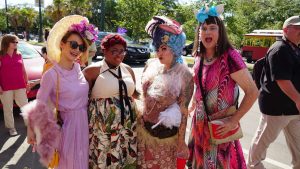Easter Sunday Traditions and Origin
There are quite a lot of unique traditions are associated with Easter across the world. Let us find out how the Easter traditions like Bunny, hard boiled eggs have come to existence.
Easter Bunny
The Easter Bunny is a result of folkloric tradition. There are several reasons for the rabbit, or hare, to be associated with Easter, all of which come through pagan celebrations or beliefs. The most obvious is the hare’s fertility. Easter comes during spring and celebrates new life. The Christian meaning of new life through Christ and a general emphasis on new life are different, but the two gradually merged. Any animals – like the hare – that produced many offspring were easy to include. German settlers brought the Easter Bunny tradition to America in the 1700s.

Easter Eggs
Next to the Easter bunny, the most familiar symbol is the Easter egg. Like others, the egg has a long pre-Christian history. Again there’s no certainty as to why it became associated with Easter.
Many Ancient cultures viewed eggs as a symbol of life. Hindus, Egyptians, Persians, and Phoenicians believed the world begun with an enormous egg. The Persians, Greeks, and Chinese gave gifts of eggs during spring festivals in celebration of new life all around them. Other sources say people ate dyed eggs at spring festivals in Egypt, Persia, Greece, and Rome. In ancient Druid lore, the eggs of serpents were sacred and stood for life.
Early Christians looked at the connection eggs had to life and decided eggs could be a part of their celebration of Christ’s resurrection. In addition, in some areas, eggs were forbidden during Lent; therefore, they were a delicacy at Easter. Since many of the earlier customs were Eastern in origin, some speculate that early missionaries or knights of the Crusade may have been responsible for bringing the tradition to the West.
In the fourth century, people presented eggs in church to be blessed and sprinkled with holy water. By the twelfth century, the Benedictio Ovorum had been introduced authorizing the special use of eggs on the holy days of Easter. The timing of this blessing would uphold the idea that Crusaders may have brought the tradition back. Even though eggs had been used previously, the Crusaders may have made the custom more popular and widespread.
In 1290, Edward I of England recorded a purchase of 450 eggs to be colored or covered with gold leaf. He then gave the eggs to members of the royal household.
Once the custom became accepted, new traditions began to grow up around it. Eggs were dyed red for joy and in memory of Christ’s blood. Egg rolling contests came to America from England, possibly as a reminder of the stone being rolled away.
The tradition of Hot Cross Buns
Hot cross buns and other breads marked with an X to symbolize the cross are a tradition on many Easter tables. Different sweet breads are also used all over the world. Try these: Choreg (Armenia), Paska (Ukraine), Babka (Poland), Tsoureki (Greece). Also, try a traditional Italian Easter Bread (shown above) with eggs baked right in. These are conspicuously risen breads, which may also show a desire for Easter traditions to be different from Passover, which includes unleavened breads.
The tradition of eating Ham
The tradition of eating ham most likely came from the slaughter of an animal before fall and then preservation in salt over the winter, sometimes buried near the sea. Sixty-seven percent of Americans serve ham at their Easter dinners, and this typically breaks any meat fast that is undertaken during Lent.
Choclate Bunnies
Love them or hate them, hollow chocolate bunnies will most likely end up being a part of your Easter. Containing an underwhelming amount of chocolate compared to their solid counterparts, hollow bunnies may seem like one of the more bizarre Easter traditions. But there is a reason behind their popularity. In 1939, chocolate manufacturers wanted a way to make chocolate bunnies that could be large and decorative while still easy to eat. It’s easy enough to bite into a thin solid chocolate bunny, but bigger chunks of solid chocolate can be tough on your choppers. Making hollow bunnies was also a way for manufacturers to sell larger products at a cheaper price. Enjoy your candy this Easter without guilt by remembering this nutritionist-approved ranking of Easter candies.

Easter Basket
One of the most popular Easter traditions, the Easter basket was originally more of an Easter nest. Like the bunny itself, the gifts he brings come from a German tradition as well. The Easter baskets were inspired by the concepts of fertility and springtime, just like many other Easter traditions. Children would make “nests,” filled with grass, in hopes that Peter Cottontail would fill the nest with eggs. The nests gradually evolved into baskets, which were less messy, easier to carry, and, of course, bigger, like these 15 Easter basket ideas the whole family will love.
The Easter Lamb
Of all Easter symbols, the lamb is probably the most strongly Christian. Other than the fact that lambs are young animals born in springtime, it has no strong ties to pagan traditions.
The lamb comes from the Jewish Passover, where each family killed a lamb as a sacrifice. When Christ became the Passover Lamb for everyone, the lamb became a symbol for His sacrifice.
Sunrise Services
The familiar sunrise service is a relatively new addition to Easter. A group of young Moravian men in Hernhut, Saxony held the first recorded sunrise service in 1732. They went to their cemetery called God’s Acre at sunrise to worship in memory of the women who went to the tomb early on the first Easter morning and discovered it empty. Moravian immigrants brought the custom to America, with the first service in the United States held in 1743.

Easter Lilies
The Easter lily is another new addition to Easter celebrations. Throughout the years, painters and sculptors used the white Madonna lily to symbolize purity and innocence, frequently referring to Mary. This lily doesn’t force well, so nurseries couldn’t get the flower to bloom in time Easter.
In the 1880s, Mrs. Thomas Sargent brought Bermuda lily bulbs back to Philadelphia. A local nurseryman, William Harris, saw the lilies and introduced them to the trade. A more practical consideration was that they were easy to force into bloom in time for the Easter season. From there, they Bermuda lily, now the familiar Easter lily, spread throughout the country.

Easter Parades
There’s an old superstition that wearing new clothes on Easter means good luck for the rest of the year. You could say it has something to do with rebirth and renewal, but mostly, it sounds like an excuse to go shopping. Either way, fancy new finery deserves to be seen for more than 60 minutes during Easter services, so in the mid-1800s, parishioners in New York arranged themselves into a little post-church fashion show as they left their Fifth Avenue churches. The tradition continues today, though the term “finery” seems to be a bit broader now.
Osterbrunnen
The German tradition of Osterbrunnen—decorating public wells and fountains with elaborate greenery and Easter egg décor—only began about a century ago. It’s said that German villagers wanted to honor both Easter and the gift of water, which also represents life and renewal. Neighboring villages began to compete to see which of them could create the most fanciful fountains, and by 1980, approximately 200 villages were participating in the event. It’s even spread stateside—the town of Frankenmuth, a Bavarian-style village in Michigan, has adopted the Osterbrunnen tradition in the month surrounding Easter.
@religionworldin









